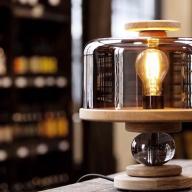An uninformed person, looking at jewelry made of silver, platinum and palladium, most likely will not see any difference between them and think that they are all made of the same metal. Meanwhile, these precious metals differ in their physical and chemical properties. Of course, they also differ in price. In this article, we will tell you about the properties of these metals.
- The structure of platinum is several times harder than the structure of silver. Platinum jewelry does not scratch from accidental mechanical stress. Platinum is much less common in nature than silver. Therefore, platinum products, like ingots, are much more expensive. In addition, platinum jewelry is, in fact, a great rarity. Platinum is much more difficult to melt than silver, as its melting point is much higher than that of silver. Finally, this metal does not oxidize at all.

- Palladium differs from platinum and silver in its lower specific gravity. It is a durable precious metal that is absolutely corrosion resistant. Palladium is extremely resistant to mechanical damage. Despite the fact that it is a durable metal, it is at the same time soft and pliable in processing.

At first glance to an inexperienced person, platinum and silver are very similar. However, with a little practice, you can easily tell the difference!
Steps
Visual check
- If the jewelry doesn't have any markings at all, it probably isn't made of precious metal.
-
Look for labels indicating that the piece is made of silver. Some coins and jewelry are stamped with "999". This indicates that the piece is made of pure silver. If you find the inscription "925" with the letter "S" before or after the numbers, then the item is made of silver coins. In this case, the jewelry consists of 92.5% silver, the rest is made up of other metallic impurities, usually copper.
Look for inscriptions that would indicate that this is platinum. Platinum is a very rare and expensive metal, so authentic jewelry is labeled accordingly. Look for "Platinum", "PLAT", or "PT" tags with "950" or "999" in front or behind. These numbers indicate the purity of platinum, with the most pure metal being the number "999".
- For example, a genuine platinum piece may be labeled “PLAT999”.
-
Bring a magnet to your jewelry. Most precious metals do not belong to ferromagnets, that is, they are not attracted to a magnet. However, don't panic if the platinum jewelry reacts to the presence of a magnet. Pure platinum is a soft metal and is therefore hardened with other additives. Cobalt is often used as a hardening alloying element. Cobalt is a ferromagnet, so some platinum jewelry can be attracted to a magnet.
Using the acid scratch test kit
-
If the jewelry is difficult to test otherwise, use an acid kit. If you are unable to find any inscriptions on the jewelry and you are in doubt about its origin, use a test kit to determine what it is made of. Purchase a test kit from a jewelry store or order online. This set includes a grinding stone and several bubbles with different acids.
- Purchase a kit that is suitable for determining silver and platinum. It should include acid bubbles to detect these metals.
- If the kit does not include rubber gloves, purchase them separately. Be careful not to get acid on your skin, or you may get burns.
-
Rub the metal with a grinding stone. Place the supplied grinding stone on a flat surface. Rub the decoration lightly from side to side to form a line. Apply 2-3 lines to the product (one for each acid). For example, if you want to determine if a piece is made of platinum, silver, or gold, you need three lines.
- Rub an inconspicuous part of the decoration against the stone. Grinding stone will scratch and damage the metal surface.
- Place the grinding stone on a towel to avoid scratching your countertop or other work surface.
-
Place a drop of acids on the lines left by the stone. Take acid from the test kit and carefully apply a small drop to one of the scratched lines. Do not mix different acids, otherwise the results will be incorrect.
Monitor the acid reaction. The reaction can occur within a few seconds or approximately one minute. If the scratched line disappears completely, the test is negative. For example, if you drop acid to determine platinum and the line dissolves, the jewelry is not made of platinum. If the line persists, you have pure platinum.
Applying test solution directly to silver
- Wear gloves to protect your hands and cover the work surface with a towel.
- Do not apply acid to fasteners and other important parts. Remember, acid can seriously damage small pieces.
Use silver testing solution on large, large pieces of jewelry. Do not apply this acid to delicate jewelry. If it comes into contact with a metal surface, acid will corrode it. If you purchased an acid test kit, use the included silver test solution. This solution can also be purchased at a jewelry store or ordered online.
Check out the decoration. Apply a drop of silver detection solution to the metal. For this, select an inconspicuous area of \u200b\u200bthe product. For example, if you want to test a large cuff bracelet, add acid to the inside. For a short, flat necklace, apply a drop of acid to the back of one of the links.
-
-
Track your reaction. At first, the acid will be dark brown or clear, then change color. By changing the color of the solution, one can judge the purity of the metal. For example, if the liquid darkens or turns bright red, the metal contains at least 99% silver.
Remove acid from jewelry. Wipe off the acid with a clean cloth and discard. Rinse the product with cold water to remove acid residues. Use a colander or plug the drain hole to prevent the jewelry from rinsing off with water. Allow the jewelry to air dry completely before putting it on.
Look for any identification marks on the jewelry. These marks can be etched directly onto the metal. If the jewelry has a clasp, look for the lettering on the back. In addition, there may be a small metal tag on the end of the jewelry with a description. Finally, inspect the largest pieces of jewelry.
Hydrogen peroxide test
- You can buy hydrogen peroxide at your local drugstore.
-
Look at the reaction. Platinum is a powerful catalyst for hydrogen peroxide. If the jewelry is actually made of platinum, the peroxide will gurgle almost immediately. Silver is a less powerful catalyst. If the liquid does not begin to bubble gas immediately, wait about one minute to see if smaller gas bubbles form near the metal surface.
- Hydrogen peroxide will not corrode or damage your jewelry.
-
Wash your jewelry well. Rinse the jewelry under cold water to remove hydrogen peroxide. Plug the sink drain or use a colander to keep the jewelry from rinsing away. Allow the jewelry to air dry completely before putting it on.
Place the jewelry in hydrogen peroxide. Pour hydrogen peroxide into a glass bowl or glass and dip the jewelry into it. The decoration should be completely submerged in the liquid. If the hydrogen peroxide does not completely cover it, add a little more.
Precious metals have always been valued. Ancient people believed that gold is a clot of sunlight, which means it brings good luck. This noble metal could be found almost everywhere. Decorated with gilded frescoes and icons. It is believed that all gold mined on Earth remains in circulation, minted and melted. This means that if you have a piece of gold, then quite possibly a long time ago some part of it was in the necklace of Queen Cleopatra. Today we will talk about such a variety of metal as white gold. Let's explain where it came from, why it is white and what it consists of.
White gold: description, distinctive properties
White gold is not a natural phenomenon, but an alloy of yellow gold with other metals. Unlike ordinary gold, which has a natural yellow tint, people have learned to create white for their own purposes. Its popularity came from Europe in the 20th century and continues to this day.Depending on what metals are in its composition, the properties of precious items also differ. Many people believe that white gold is nobler than yellow and even has magical properties. It will help stabilize the work of the heart, blood vessels and simply cheer up. It is believed that this noble metal is most suitable for such signs of the zodiac as Cancer, Pisces and Scorpio, since it has a strong influence on people with the element of Water.
Also, different alloys are designed for different things. For example, the alloy that includes nickel is quite durable, which means it is excellent for making earrings and rings.
Alloy composition
The amount of metals that is added to alloys to give a snow-white hue is quite extensive.Can be used such as:
- Nickel
- Bronze
- Silver
- Platinum
- Palladium
Council. A small percentage of people have an allergic reaction to nickel, which is very often found in the white alloy. Before buying a precious product, be sure to make sure that you are not allergic, and if you have one, purchase jewelry without admixture of this metal.
What are the samples of white gold
Every person must have heard about the test, but not everyone understands what it is and why it is needed. Sample or as it is called in another way "brand" is an indicator of the amount of gold material in the product. In fact, it is impossible to create jewelry without admixtures of other metals. Real gold is very soft and if it were not for other impurities, it would be very problematic to make something out of it. This is why people began to add third-party metals that give the product hardness and strength.There are many different samples. The most common are the 585th and 750th. Depending on the sample, the price of the product fluctuates. For example, sample 375 contains only 37.5% of gold material, which is actually jewelry and the cost of such jewelry is low. While the fineness of 750 belongs to the so-called luxury version and contains as much as 75% gold in its composition. Such a stigma is usually placed on expensive jewelry of well-known brands.
Below is a picture showing the stamps that can occur:

Important. In the age of technology, forging a sample has become easy enough. Therefore, buy products from trusted people or licensed stores.
What does white gold look like?

White gold looks great in branded, expensive jewelry. It is in perfect harmony with precious stones - sapphires, diamonds, emeralds and black pearls. This alloy makes it possible for jewelers to create original pieces by simply combining white with black.
There is one more point worth noting. Over time, white metal tends to become dull and lose its former luster. The fact is that most of the jewelry is coated with the so-called "rhodium" layer. Therefore, if the jewelry has such a rich snow-white shade, then it is covered with "rhodium". Unfortunately, if you constantly wear the product, the "rhodium" will gradually wear off. Fortunately, the jeweler can restore the original color of the product and reapply the layer of "rhodium". This service is inexpensive, and your favorite jewelry will return to its original appearance and will be as good as new.
Difference from silver and platinum

Inexperienced people sometimes confuse white gold with silver or platinum, as they are very similar in color. Perhaps at first glance, there are no differences from platinum and silver. But there are actually visual differences. First, take a closer look at the shade of the product. The white alloy has a warmer color than silver, which has a cool hue. Then look at the sample, silver is different.
As for the non-visual difference, there is a verification method that will accurately show gold in front of you or silver.
You will need iodine. Draw a small strip on an inconspicuous spot on your jewelry. If the item is made of silver, iodine will react and it will be colored. Iodine is easily erased from white gold and will not leave any traces. But be careful not to ruin the jewelry.
A similar experiment can be repeated with vinegar. Just dip the piece of jewelry in a glass of vinegar. If the jewelry is colored - then it is silver, if not - gold. But if it has not changed color, but the water has become cloudy, this means that there are many impurities in the decoration or it is completely fake.
With silver sorted out. What about platinum? Well, first of all, we want to note that platinum is much more expensive and, accordingly, hardly anyone will sell platinum under the guise of any other metal.
Platinum is a pure metal that is heavier in weight and much stronger than gold. Brands on platinum also differ in shape from those on gold.
How to check white gold for authenticity
How to check the authenticity of a product?There are several ways:
- You will need a magnet. Any precious metal is non-magnetic. If the jewelry reacts to the approach of a magnet, then this is definitely a fake.
- You will need a lapis pencil. You can buy it at the pharmacy. Lightly dampen the piece with water, then run the pencil over it. If the metal remains clean, then this is real gold. Perhaps this is the most convenient way to authenticate
- Weigh the product. For example, you can take a similar product of approximately the same mass as the jewelry being checked for authenticity and compare their weight with each other. The fact is that cheap metals like tin and copper are much lighter than gold.
- Another interesting way to determine authenticity by ear. To do this, take, for example, a ring in which you are absolutely sure. The point is for the jewelry to fall onto the glass surface. If both jewelry makes the same sound when dropped, then most likely the alloy composition is the same
How white gold is made: video
To the untrained eye, some precious metals appear very similar. We have a general idea of \u200b\u200bwhat they look like, but we probably didn't look deep enough to reveal the nuances that differentiate them.
Silver, platinum and palladium are very similar in color, but the ability to distinguish between them will help you know if you are buying authentic items or not. Wherever you buy silver, platinum or palladium, it is important for you to know the differences between these three precious metals.



Silver, platinum and palladium bases
To distinguish these three precious metals, you need to know their basic characteristics.
- Silver is a widespread precious metal used to make jewelry, coins, bars, tableware, and more. Silver is stained and corroded. It is also softer than gold and other precious metals and is very malleable.
- Platinum is harder and much less resistant to scratches and corrosion. American platinum is less common than silver, so items made from it are not so common. The melting point of platinum is also significantly higher than that of silver, making it more durable. There are many silver items that have no platinum counterparts.
- Palladium is lighter than platinum and silver. It is also highly resistant to corrosion and scratches. It is one of the toughest precious metals on the market while being soft and ductile.
Even if these metals are difficult to distinguish with the naked eye, it is possible with a little help.
Determining the differences between silver, platinum and palladium
Silver stands out for its prevalence. It is most susceptible to scratches and corrosion, so their presence is a good indicator that it is silver or a combination of different metals. It is no coincidence that more jewelry is produced using platinum and palladium. Silver is also less dense than platinum and palladium, how do you define true platinum? In addition to being whiter and brighter, it doesn't look much different from palladium and silver. Platinum is highly resistant to scratches and corrosion. Buyers should also pay attention to the difference in density. “Silver and platinum have different densities, and if you can calculate the weight and displacement of your piece of jewelry, you get an equation that gives you a rough estimate of the proportion of platinum in it. This figure for platinum will be approximately 18 g / cm3, and for lighter silver - approximately 10 g / cm3. "
Welcome to the leading website for the purchase of precious metals in the Russian Federation. Our scientific center will devote today's educational program to questions of the authenticity of such a precious metal as. Here are just 4 of the easiest and most effective ways that you can use.
1. Estimate the weight of the item by comparing it with a similar volume of gold or silver. A platinum item will be heavier than gold and much heavier than silver. The main difference between platinum and other metals is, of course, its weight. Also, rhenium and uranium have a similar mass. All other naturally occurring elements are lighter than platinum. In addition, platinum 850, 900 or 950 is used in the manufacture of jewelry. This means that the item is 85%, 90% or 95% pure platinum, respectively. The content of pure gold or silver in the used jewelry alloys is much lower, so platinum items are always heavier. It makes no sense to weight platinum with metals of similar weight, since iridium, osmium, and rhenium are quite rare and are comparable in cost to platinum. You don't even need to mention uranium.
2. Platinum is not affected by any substances used in everyday life. This means that neither acetic acid, nor iodine solution, nor hydrogen peroxide can leave any traces on a platinum product. Platinum belongs to noble metals - it does not oxidize in air and water. It is one of the most inert metals and does not react with any known acids and alkalis without heating. It dissolves slowly only in a mixture of concentrated nitric and hydrochloric acids ("aqua regia") and liquid bromine.
3. Platinum cannot be melted with ordinary burners used in everyday life - a lighter, the flame of an ordinary gas stove, etc. Also, such heating will not cause discoloration of the product. Platinum is an extremely refractory metal. For a long time, it was this property that prevented its active use in industry and jewelry.
4. The most acceptable way to determine platinum at home is to measure the density of the product. To do this, you need to determine the weight of the item in grams. Then determine the volume of water, in cubic centimeters, displaced by it. You can use a suitable measuring container for this. After that, the weight of the product in grams must be divided by the volume of displaced water in cubic centimeters. If the figure is close to 21.45, then you are dealing with platinum. Naturally, there should be no voids in the measured material. But there is a fifth, most accurate and easiest way to determine the authenticity of platinum. To do this, you just need to bring samples of your Platinum to
Academy of Precious Metals, where we will be able to carry out an accurate analysis of the samples provided by you on the spot as quickly and free of charge as possible. All methods are good, but this one is the best and most accurate. Contact us, we will be glad to cooperate with you.




